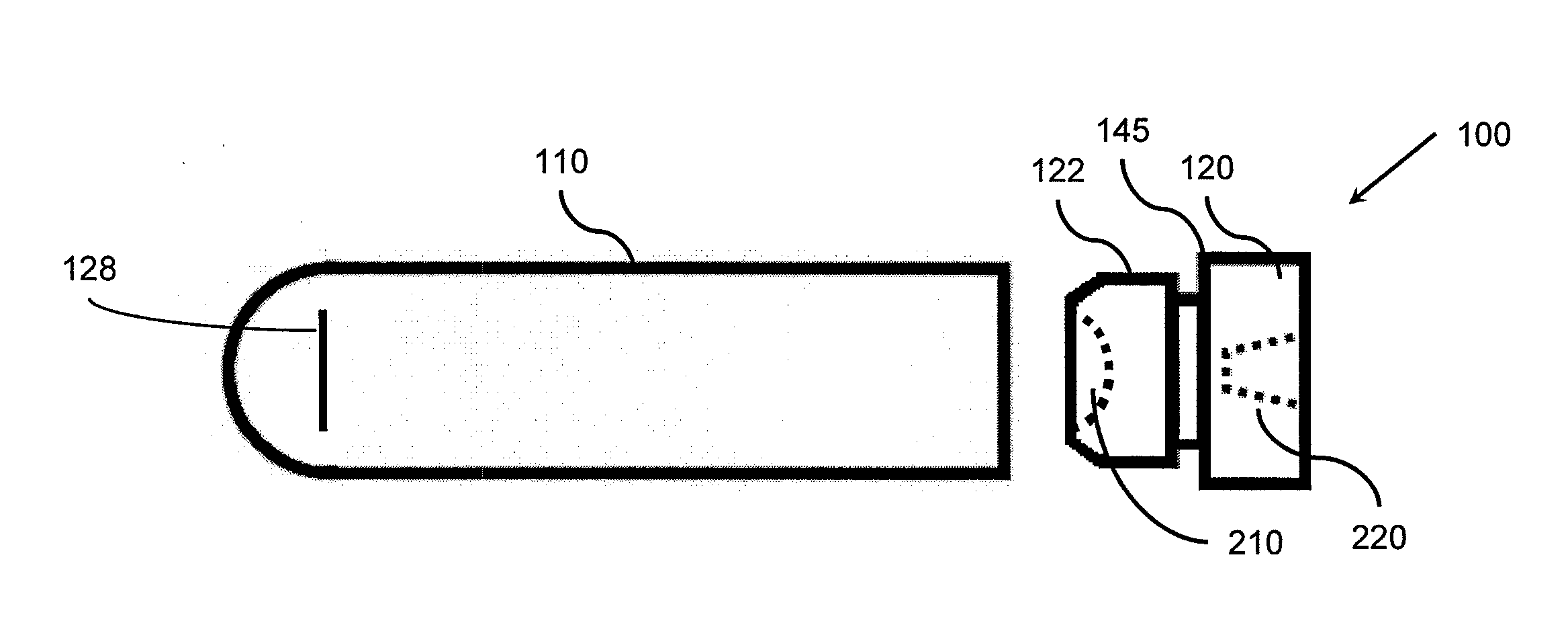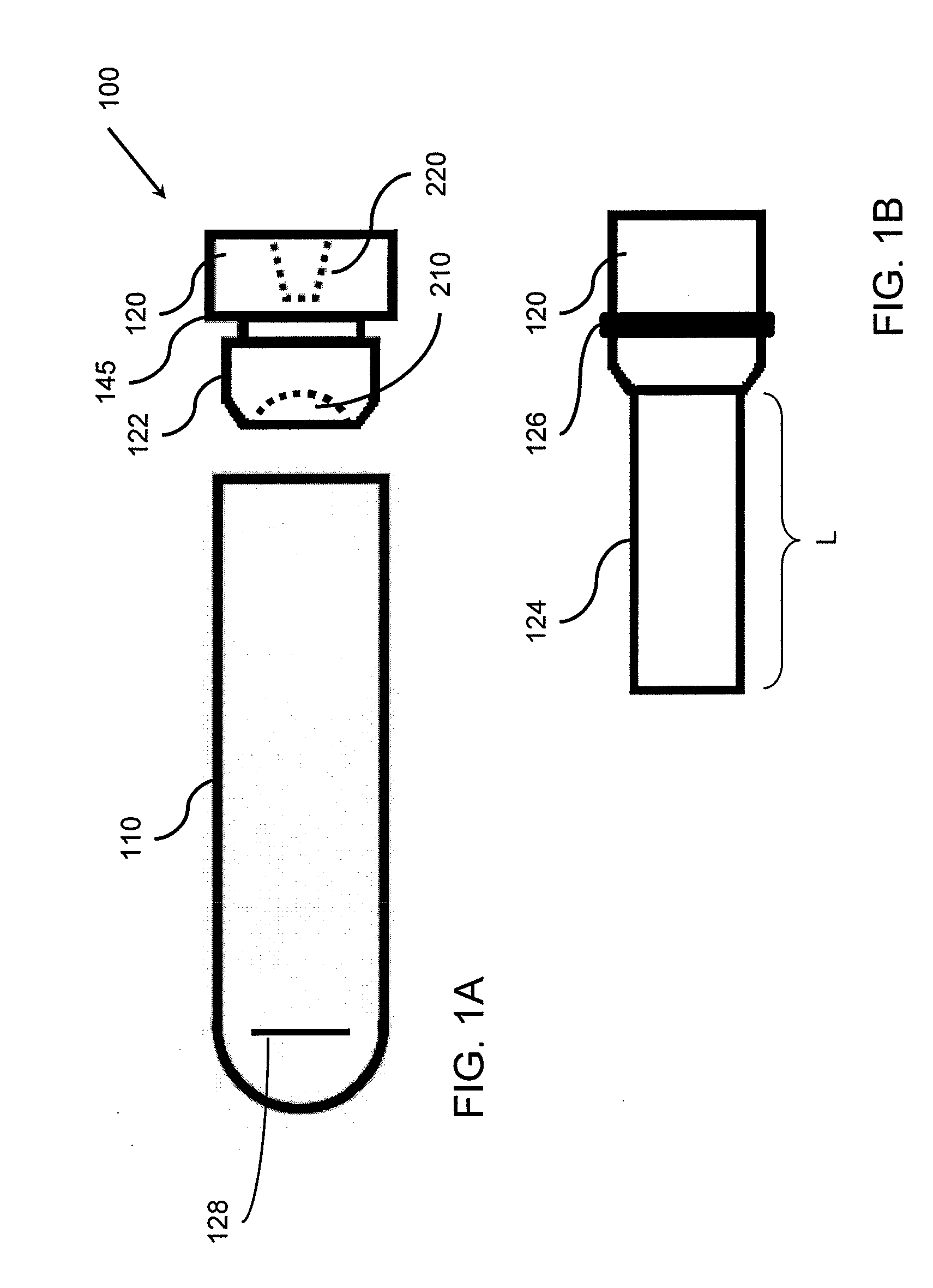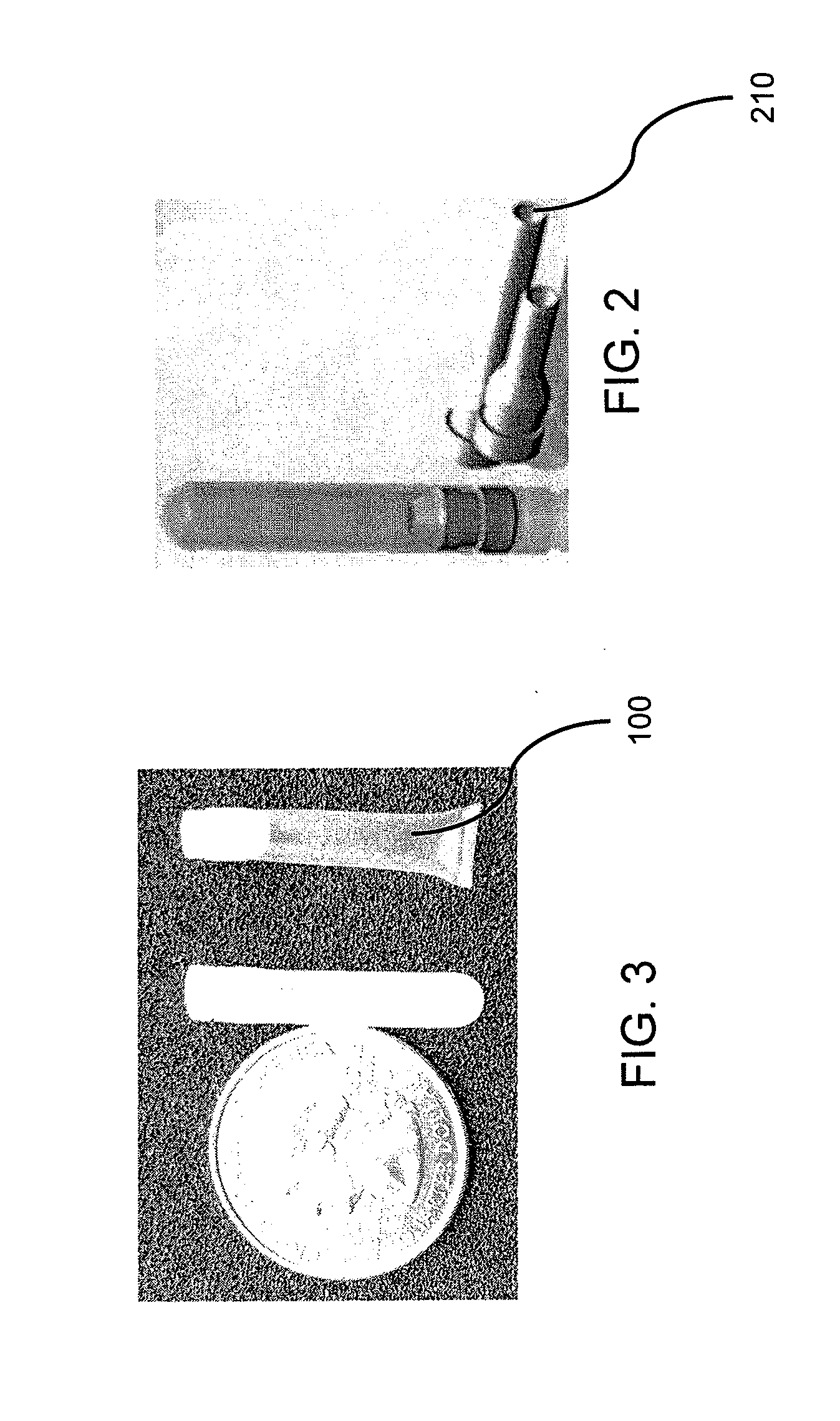Microtube and related methods therefor
a microtube and microtube technology, applied in the field of systems and methods for preparing, isolating, and purifying specimens, can solve the problems of difficult to extract biological molecules from such samples, time-consuming, labor-intensive, and difficult to meet the application of molecular analytical techniques, so as to reduce the applied pressure, relieve the microtube, and reduce the applied pressure
- Summary
- Abstract
- Description
- Claims
- Application Information
AI Technical Summary
Benefits of technology
Problems solved by technology
Method used
Image
Examples
example 1
[0087]This example illustrates the use of the sample processing devices (MicroTubes) of the present invention in bead beating techniques to recover protein from various samples.
[0088]Samples of kidney and lung tissues (20 mg) with phosphate buffered saline (PBS) or IEF buffer (100 μL) along with about ten to fifteen 1 mm diameter zirconia beads were introduced into each sample processing device.
[0089]FIGS. 16A-16C show a representative sample before and after bead beating. FIG. 17 shows the protein recovery, mg protein per gram sample, for the various tissue samples after bead beating in the sample processing devices of the invention (17A, 17D, 17G, and 17J) as well as the protein recovery rate for non-normalized samples processed conventionally with 1 mL buffer (17B, 17E, 17H, and 17K) and normalized samples also processed conventionally with 1 mL buffer (17C, 17F, 171, and 17L).
example 2
[0090]This example illustrates total protein extraction from small tissue samples using PCT MicroTubes with a ProteoSolve-SB™ reagent kit.
[0091]Extraction of total proteins from tissue can be limited by the poor solubility of some proteins in traditional extraction buffers. Such limitation can also be applicable for lipid-rich samples such as adipose tissue. Traditional detergent-based sample preparation methods may not adequately dissociate all proteins, especially hydrophobic proteins which may be tightly associated with membrane lipids. Isolation of such proteins can be inefficient and a substantial fraction of membrane proteins is typically discarded in the insoluble pellet after tissue extraction. Therefore, proteomic analysis of tissues can be biased toward the more soluble proteins.
[0092]Sample processing devices (MicroTubes) of the present invention were utilized with ProteoSolve-SB protocol, scaled down to use with tissue samples in the 10-20 mg size range to be compatible ...
example 3
[0104]This example illustrates extraction of RNA from solid tissue using PCT MicroTubes.
[0105]RNA was extracted from frozen / thawed rat liver tissue (Pel-Freeze). Tissue pieces, about 12 to 14 mg each, were cut from a single block of liver and placed individually into PCT MicroTubes of the invention. After addition of about 0.14 ml of TRIZOL reagent solution, from Invitrogen, the microtubes were capped with 150-μL sized caps, mixed well by vortexing, and subjected to pressure cycling (PCT) at 35,000 psi for 20 cycles (20 seconds at high pressure and 5 seconds at atmospheric pressure, per cycle). RNA was isolated from the resulting lysate using the standard TRIZOL protocol. Final RNA pellets were dissolved in about 30 μl of diethylpyrocarbonate (DEPC) treated water. RNA recovery was spectrophotometrically evaluated (NANODROP) and quality was assessed by agarose gel electrophoresis.
[0106]RNA recovery from the 12-14 mg of tissue samples were 13.5 mg of RNA (±0.2 mg, n=4). Gel electropho...
PUM
 Login to View More
Login to View More Abstract
Description
Claims
Application Information
 Login to View More
Login to View More - R&D
- Intellectual Property
- Life Sciences
- Materials
- Tech Scout
- Unparalleled Data Quality
- Higher Quality Content
- 60% Fewer Hallucinations
Browse by: Latest US Patents, China's latest patents, Technical Efficacy Thesaurus, Application Domain, Technology Topic, Popular Technical Reports.
© 2025 PatSnap. All rights reserved.Legal|Privacy policy|Modern Slavery Act Transparency Statement|Sitemap|About US| Contact US: help@patsnap.com



